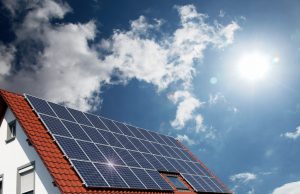
In the modern age, where safety, innovation, and sustainability are paramount, construction is no exception. The construction industry is, not surprisingly, one of the most environmentally damaging industries. According to studies, concrete construction is responsible for about 8% of global CO2 emissions (Dräger & Letmathe).
Artificial Intelligence (AI) and smart sensors are therefore not just a fleeting trend but a revolutionary stride towards sustainability. This article discusses innovative smart sensors for concrete construction from the aspects of safety and sustainability. Two important aspects that require updated practices in order to keep the planet and the construction workers safe.
Enhancing Safety through Smart Sensors
Early Fault Detection:
Traditional methods of inspecting concrete structures rely heavily on human observations, which, although skilled, can be prone to oversights. AI-driven smart sensors are designed to meticulously scan and detect issues early on. Such as temperature differentials that could lead to thermal cracking.
By catching these early, builders can address potential issues promptly, leading to more robust structures that stand the test of time.
Real-time Monitoring:
Monitoring the health of large construction projects has always been a challenging task. But, with AI sensors, gone are the days of sporadic checks. These sensors can continuously monitor the curing process of concrete, offering real-time feedback on its condition.
Should any abnormalities arise, these systems alert professionals immediately, ensuring that timely interventions are made, thereby preventing further complications or, in the worst cases, potential mishaps.
Striving towards Sustainability through Smart Solutions
Optimal Resource Usage:
Inefficient resource utilisation often results in unnecessary wastage, escalating costs, and environmental burdens. Smart sensors, however, have the capability to precisely analyse the quantities and types of materials needed.
By ensuring only the required amount of concrete mix is used, projects can steer clear of excesses, leading to significant resource conservation. This is especially important in construction projects due to 13% of the products delivered to construction sites, won’t ever be used. Instead, these products are sent straight to landfill.
Reducing Carbon Footprint:
Concrete production is notoriously associated with high carbon emissions. But what if the very material could be reinvented? With AI insights, researchers and builders can explore optimal mix designs that utilise alternative, less carbon-intensive materials without compromising on structural integrity. The result? Buildings that are not just strong, but also kinder to our planet.
Lifespan Predictions:
A structure’s longevity isn’t just about the materials used, but also about how they’re used. AI-backed smart sensors can analyse the quality and application of concrete, making forecasts about a structure’s potential lifespan.
Having this knowledge during the design phase can influence the choice of materials and construction techniques, ensuring the creation of edifices that don’t just last but also minimise environmental impact over time.
Important things to keep in mind
The fusion of technology and construction is reshaping the landscapes of cities and towns. As AI and smart sensors become increasingly integral to the construction realm, we can anticipate a future where buildings are not just monuments of human achievement but also beacons of safety and sustainability.













